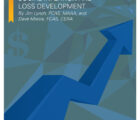Lower rates, excess capital and dwindling reserve redundancies: What is a reinsurer to do?
A trio of market observers outlined the state of the reinsurance world at the CAS Seminar on Reinsurance in Boston in June 2016, focusing on rates (falling), loss trends (improving) and underwriting (more cautious, to a point).
Raju Bohra, FCAS, an executive vice president at Willis Towers Watson, led a discussion titled “Macro Trends in the Reinsurance Industry — the Analyst and Rating Agency View.” The panel featured two equity analysts: Todd Bault, FCAS, a managing director at Citi Research, and Meyer Shields, FCAS, a managing director at Keefe, Bruyette & Woods. Stefan Holzberger, A.M. Best’s chief rating officer for global credit ratings, represented the rating agency view.
Panelists agreed that the rates in the reinsurance sector were generally lower, but not declining at the pace of a year ago. Holzberger noted that his firm has a negative outlook for the sector, driven by the relatively low return firms would expect if they booked a normal level of catastrophes this year.
“We would expect rates to continue to trend down,” he said, thanks to excess capital in the marketplace keeping rates low. He did note that there are some signs of underwriting discipline. Reinsurers have become more likely to decline to quote business priced too low. Some writers have cut back on catastrophe business, where observers say the market is softest.
Catastrophe models have imposed some discipline on the market, Shields observed.
“Is the discipline in the right place?” he asked. “That’s unknowable. I guess we’ll find out.” The market is close to “a widespread, consistent breaking point” on rates, he said.
Bault added that there is a reasonable debate as to whether recent price declines are a sign of a cyclical market, or if rates are permanently low. Bault believes that the infusion of new investors — from insurance-linked securities (ILS) and hedge-fund reinsurers — pushed rates to a permanently lower level a few years ago. More recent declines, he said, are oscillations in a new cycle.
If rates are low now, Bohra asked, what will turn them around? Some panelists suggested it would take more than a record-setting catastrophe in the $50 billion to $100 billion range. The nature of the catastrophe would have to be a surprise, something that the current crop of models don’t anticipate.
“It’s got to be the event that breaks your model or bangs it up a little bit.”
Holzberger, from A.M. Best, said it might take a number of years of large catastrophes, noting that about 30 percent of available reinsurer capital is not being utilized.
Shields added that catastrophe bonds and other new capital structures make it easy for investors to re-enter the market after a disaster. “There is so much supply chomping at the bit waiting to get in the industry” if the opportunity arises.
Moderator Bohra followed up: “So ILS capital is here to stay?”
“That’s what they’re saying,” Bault replied.
Shields commented that catastrophe risk is much better understood now thanks to cat modeling.
Holzberger noted that investment markets remain attracted to the fact that insurance risk is uncorrelated with traditional stocks and bonds, so adding insurance risk makes portfolios more efficient.
The competition for property catastrophe business has forced capital into the casualty market, intensifying competition there. The casualty market is in what Bohra called a “benign phase.”
Reinsurers have become more likely to decline to quote business priced too low. Some writers have cut back on catastrophe business, where observers say the market is softest.
Holzberger of A.M. Best said reinsurer results have been strong — combined ratios around 90 and returns on equity above 10 percent — but noted that results were buoyed by a lack of catastrophes and favorable reserve development. Cross those off, he said, and “You’re at a break-even combined ratio at best,” without investment income to take up the earnings slack.
Bault said his research suggests that loss trends in casualty have been zero or slightly negative since the 2001 World Trade Center attacks, an event that accelerated a nascent hard market.
The flatlining loss trend is very different from the growth during the generation that preceded it. Underwriters may have grown more risk averse since 9/11, he suggested, and the financial crisis may have extended the life of that trend.
Still, accident year results have been booked with less cushion in recent years, and he predicts that by 2017, the industry overall will be booking deficient reserves. Then the situation could look much like the late 1990s, when companies under-reserved their recent accident years, then spent much of the following decade topping up.
Still, Bault notes, reinsurers socked away considerable redundancy in recent years. His 2014 analysis suggested that reinsurer bookings were three times as redundant as that of their primary company brethren. “That’s a lot of ballast” to try to outlast your competitor, he said.
Shields noted that inflation — a scourge to loss reserve estimates — has been limited for a decade and a half, and he worries when loss trends will return to their former levels.
“It’s coming, I just don’t know when,” he said.
James P. Lynch, FCAS is chief actuary and director of research and information services for the Insurance Information Institute.













